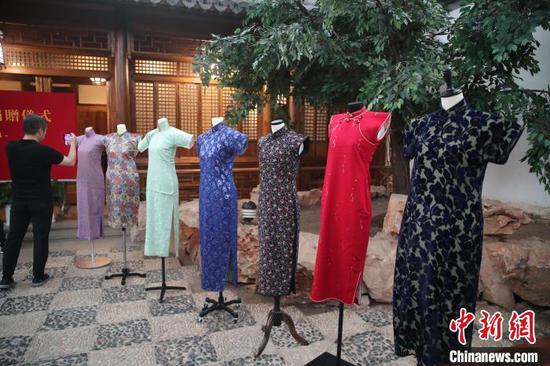
The first batch of donated items included 12 pieces of clothing from the late Qing Dynasty (1644–1911) and the Republic of China (1912–1949).
The Shanghai Museum held a donation ceremony on Wednesday for artifacts given by Jeffrey Chang Shin-che, a singer from Taiwan. The first batch of donated items included 12 pieces of clothing from the late Qing Dynasty (1644–1911) and the Republic of China (1912–1949), surprising netizens and earning praise.
Chang, born in 1967, is a well-known male singer from Taiwan. While many know him as a singer, he is also a collector and curator. He has initiated several exhibitions on modern Chinese fashion.
When he learned that the Shanghai Museum's upcoming Jiangnan Creations exhibition needed exhibits on Shanghai-style cheongsams, he offered pieces from his collection of over 1,000 cheongsam dressses and donated them to fill the gap, according to a post published by the museum on Sina Weibo on Wednesday.
After careful selection, Chang picked 10 unique and representative cheongsams from his collection. Additionally, upon learning that the museum needed more Qing Dynasty women's garments, he donated two Qing Dynasty shirts and jackets.
The 12 donated garments were reviewed by experts. These garments, with their diverse styles, distinctive designs, and exquisite craftsmanship, prominently reflect the artistic style and craftsmanship of Jiangnan (a region located in the coastal area south of the Yangtze River) and Shanghai women's clothing from the late Qing Dynasty and Republic of China periods. They hold high research and exhibition value, said the museum.
Chang said at the ceremony that through the museum's collection and curation, more people will be able to appreciate these items and experience the unique charm of Shanghai-style cheongsams.
Previously, Chang's private collection was also displayed at the Wuhan Museum in Central China’s Hubei Province. In 2023, to celebrate International Women's Day, the Wuhan Museum opened an exhibition on women's fashion from the Republic of China era on March 7. Using over 70 pieces of Republic of China calendar posters and cheongsams as mediums, the exhibition showcased the fashionable, intellectual, and free-spirited charm of Chinese women during that period through digital display methods.
Among the many precious exhibits were five original calendar posters by renowned artists and three cheongsams from the Republic of China era, all from Chang's private collection.





